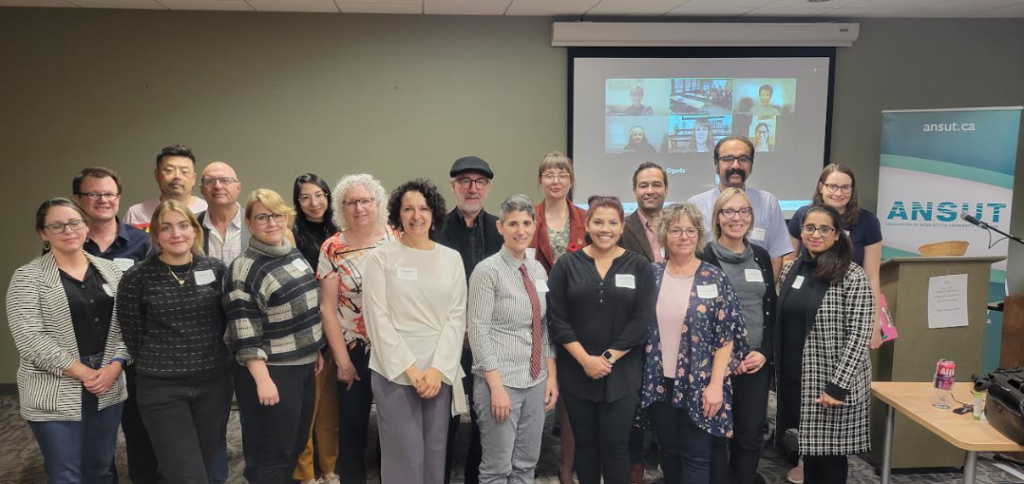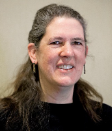This piece was originally published in the April 2022 Newsletter.
Larissa Atkison
In early April 2022, a few of us participated in supplemental interviews for the next President of Mount Saint Vincent University. In response to a question on part-time precarity, one of the candidates exclaimed, “no one could expect to make a living stringing together part-time teaching contracts, it’s impossible!”
This statement was not meant to be cruel or ironic. The candidate was quick to admit that part-time per course compensation is terrible. This had just not struck them as particularly problematic, because they believed (coming from a business background) that most contract academics have full-time careers and therefore accept low stipends as a “way of giving back to the community.”
This episode warrants unpacking.
Doctoral programs across North America accept far more students than could ever be employed on the academic job market. Between 2002 and 2017, the number of students admitted to PhD programs in Canada more than doubled, yet the number of academic jobs has remained constant. Moreover, only one third of those who complete their PhDs typically find full-time academic positions. As is often the case, these numbers are even worse for women, who earn 19 percent less than their male counterparts, and are more likely to end up in precarious academia. This is no accident. University administrators have come to rely on an overabundance of unplaced (in tenure-track positions) academics to deliver undergraduate instruction at discount rates.[1] This cost- saving measure has allowed universities to continue to invest in new buildings, infrastructure, and administrative raises, even at a time of decreasing provincial funding.
The term “part-time instructor,” used at all three institutions in the HRM to describe precarious teaching, is designed to belie this undignified reality. Part-time terminology signals an arms-length relationship between universities and precarious faculty, where the latter are categorized as occasional and dispensable workers. It allows university administrators to shirk their responsibility to provide precarious academics full-time supports, including benefits, pensions, office space, paid leave, access to meaningful professional development, and a voice in university governance.
Sure, some CUPE 3912 members do fit the Mount candidate’s description. Those who teach in professional faculties such as business, nursing, pharmacy, dentistry, medicine, law, and so on, often do teach as a side gig to supplement full careers. Some also teach part-time at the end of their careers, whether they be retired faculty or other professionals.
But the reality is that most contract faculty in our union and across the country do strive to string together enough contract teaching to equal a full-time job.
In this sense, the Mount candidate was insightful. Making a living wage as precarious faculty is incredibly difficult. In the HRM, an entry- level instructor would have to string together at least nine CUPE 3912 teaching contracts (4.5 full credits) each year to achieve a living wage. So much for research! Senior CUPE 3912 instructors would likewise need to teach seven courses a year to earn the same. The bar here is low. We are talking about the amount of work that is required to make ends meet month to month – we are not talking about compensation that adequately reflects years of professional training and expertise or that corresponds to the hours of (research-supported) work that university level teaching involves.
The situation is particularly bad in our local.
True, CUPE 3912 members have access to three universities in the HRM, all of which heavily rely on cheap part-time teaching. But the market is bloated and there is simply not enough contract teaching work to go around. In this context, the old tenet that achieving precedence is a matter of waiting one’s turn no longer holds true. It is not uncommon for new members to land only one contract a year at each institution – if they are lucky. At this rate it would (and often does) take years to gain precedence and the accompanying pay increases and minimal security that go with it. In most cases, it is simply not possible for a junior CUPE 3912 member to earn a living wage as a university instructor.
Moreover, because our compensation is so incredibly low, those who are at the top end of the seniority scale are incentivized to take on excessive teaching loads to establish a basic degree of financial security (in the absence of pensions, benefits, paid leave, and so on). Members who have precedence at multiple institutions could, theoretically, teach as many as 24 courses a year to offset terrible per course compensation. Of course, the prospect of teaching 24 courses a year sounds absurd — it is! But it is not unheard of for CUPE 3912 members to teach 15-18 courses a year. Who can blame them, when bulk teaching is the only mechanism available to increase their meagre income year over year?
Both situations are untenable and mutually compounding. The excessive teaching burden that some members are driven to accept to secure basic financial stability means that there are fewer jobs to go around. This makes it very difficult for new members to make ends meet, let alone earn anything close to a living wage. Excessive teaching also sets a bad precedent with our employers. It conveys to administrators that teaching 5-6 courses a term is doable. This, in turn, allows employers to rest satisfied that we are fairly compensated for our work. Ultimately, it undermines our capacity to advocate for fair compensation based on realistic assessments of the time it takes to teach a university-level course well.The standard rule of thumb for undergraduate teaching is that each hour of teaching should involve approximately three hours of prep time. This does not include time spent with students in office hours, it does not include grading, or emailing, or any of the other increasingly time-consuming technological aspects of our job. If these numbers are reliable, which personal experience and anecdotal reporting support, then a 3-credit course with three hours of class time per week, would require anywhere from 12 to 20 hours per/week, depending on whether teaching it is a new or established prep.
In other words, if we assume a standard 40-hour work-week for our “full-time” teaching members, then an ideal teaching load should be no more than three courses a term, give or take, based on experience, subject matter, enrollment numbers, and assignment structure.
As we’ve already established, it’s not only difficult for junior CUPE 3912 members to secure work, they will also work more hours for each new contract — this is especially true for women and minorities. If teaching nine courses is impossible due to limited availability of work and unadvisable given the time each required for each new prep, a more feasible full-time workload of 6-8 courses a year for junior faculty would be only marginally easier to secure and result in an annual income that is significantly less than a living wage.
Likewise, if senior members were to limit themselves to a realistic full-time teaching load of 9-10 courses a year including the semester break for professional development, restoration, research etc., that is available to full-time teachers in all education sectors (elementary, secondary, and post-secondary), they would max out their earning potential at just over a living wage.
In no way is the above scenario acceptable, yet somehow this is the reality that many of us have accepted.
One response to these disturbing facts, implied by the Mount presidential candidate, is that junior faculty should cut their losses and move on. This does seem like the only option when the alternative is to wait years for sufficient teaching credits to get by. But leaving academia is not as easy as it sounds — for most of us. Recent studies from CAUT and CAS report that contract faculty hang on, despite terrible work conditions, because they love teaching and feel a commitment to their students; others see themselves as biding time as they wait for the rare golden egg (even as this tenure-track employment becomes increasingly unlikely the longer one remains in precarious employment). There are also extraneous factors, such as family and geography that require academics to stay put in a given location. Sunk costs play a role too: academics typically spend more than a decade training to work in universities.
Why should they give up the work they’re highly trained to do and love just because academic administrators are greedy? This may be an impossible bind but it’s one many precarious academics choose to endure for reasons that run deeper than their financial interests.
What about senior part-timers? Why should those who have spent their time rising through a system which rewards endurance choose to give up their course loads, even if the work is exhausting? After all, those who have been around long enough, know that we’ve made very little progress in pushing our base stipend above $5,000/course, despite advocating for pay increases on par with the rest of Atlantic Canada and other comparable institutions since the mid 1990s. A realistic assessment of our limited progress in increasing per course compensation over the past 25 years, would almost certainly support a strategy of accumulating as much available work as possible.
I would like to suggest, however, that we do not have to choose between protecting seniority and advancing employment equity and living wages. As I see it, the end game is clear: we need full- time positions (including stability and benefits) for full-time work, and reasonable per course compensation for those who do not desire to teach full- time. We also require a clear and defensible account of the amount of work that goes into a single course from which we can advocate for reasonable part and full-time teaching course-loads and supporting benefits.
We do not need to accept the double bind that has been imposed on us by institutional
actors who stand to benefit from our division and inequity. We are at an important moment in the struggle for labour equity across the nation and within our local. How we organize to establish and achieve our demands is up to our members; let’s just not let this moment go to waste.
 The meeting started at 9:45 A.M. with Dr. Stewart, the ANSUT president, giving a welcoming speech. It continued with Dr. Jones’s poetry reading. Then, Dr. Brigham provided a report on EDIA activities at different levels at NS universities. They did not mention our union specifically in this report. The recommendation for SMUFU is mentioned below. It may be helpful for our union as well.
The meeting started at 9:45 A.M. with Dr. Stewart, the ANSUT president, giving a welcoming speech. It continued with Dr. Jones’s poetry reading. Then, Dr. Brigham provided a report on EDIA activities at different levels at NS universities. They did not mention our union specifically in this report. The recommendation for SMUFU is mentioned below. It may be helpful for our union as well. Pouya Morshedi (Ph.D. Cand.).
Pouya Morshedi (Ph.D. Cand.).  Karen Harper continues her dedication and commitment to helping improve working conditions for CUPE 3912 members and contract academic staff across Canada through her roles as a member of the CAUT CAS committee (Canadian Association of University Teachers Contract Academic Staff committee). She also recently joined the committee for COCAL (Coalition of Contract Academic Labour). Her experience with CAUT is extensive, having attended numerous Council meetings, forums (for presidents, bargaining officers), webinars and workshops. Within CUPE 3912, Karen was Communications Officer from 2016 to 2019 followed by President from 2019 to 2022. She currently still helps CUPE 3912, particularly with mobilization for SMU. Karen has taught in Biology at the Mount; in Biology, Management and Environmental Science at Dal; and in Applied Science, Biology, Geography and Environmental Science at SMU. Her main motivation for being involved in the labour movement is to try to get more paid research opportunities for CAS – see her article ‘
Karen Harper continues her dedication and commitment to helping improve working conditions for CUPE 3912 members and contract academic staff across Canada through her roles as a member of the CAUT CAS committee (Canadian Association of University Teachers Contract Academic Staff committee). She also recently joined the committee for COCAL (Coalition of Contract Academic Labour). Her experience with CAUT is extensive, having attended numerous Council meetings, forums (for presidents, bargaining officers), webinars and workshops. Within CUPE 3912, Karen was Communications Officer from 2016 to 2019 followed by President from 2019 to 2022. She currently still helps CUPE 3912, particularly with mobilization for SMU. Karen has taught in Biology at the Mount; in Biology, Management and Environmental Science at Dal; and in Applied Science, Biology, Geography and Environmental Science at SMU. Her main motivation for being involved in the labour movement is to try to get more paid research opportunities for CAS – see her article ‘